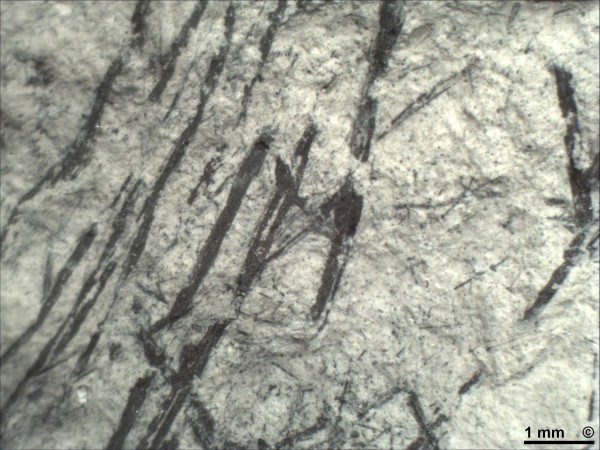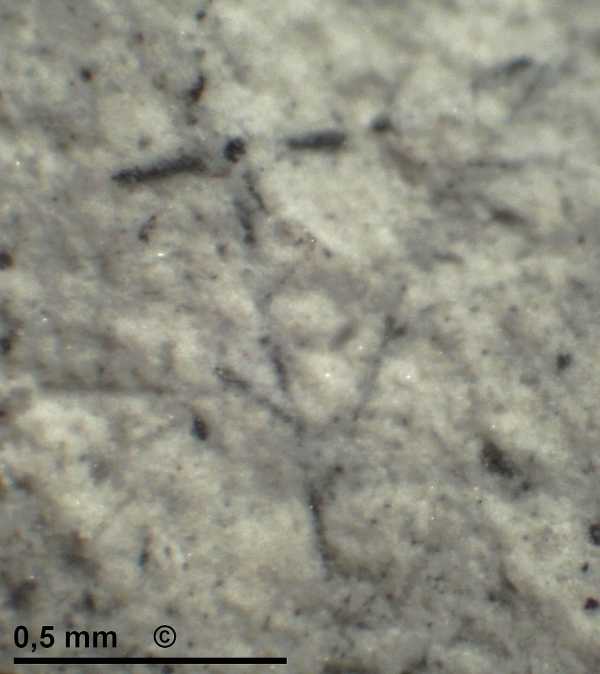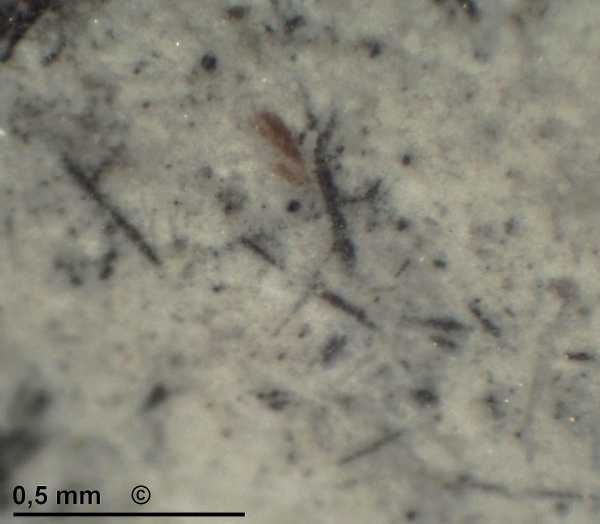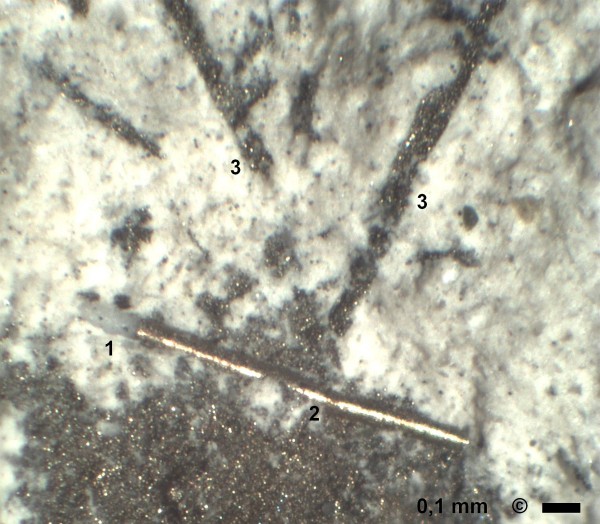
Figure 1 - Rossella rotunda Teutonia North, Misburg.
Flattened curved tubular sponge with near circular cross
fracture (bottom left end). Basket formed essentially by
two diagonal sets of diactines.

Figure 2 - Rossella rotunda Teutonia North, Misburg.
Curved tubular basket with several protruding prostalia.

Figure 3 - Rossella rotunda Teutonia North, Misburg.
Vertically compressed specimen?
Synonyms:
none
Occurence:
Teutonia, Misburg, Upper Campanian (polyplocum zone). Rare.
Rossella rotunda has been reported from the Upper Cretaceous of Bornholm and Poland (Brückner, 2006; Swierczewska-Gladysz and Jurkowska, 2013). Several recently recovered samples from the Upper Campanian of the Teutonia quarry are considered identical with this material. Lyssacinosid sponges have a very poor preservation potential, hence fossil representatives are exceptional occurrences.
The three samples shown here (Figs. 1 to 3) are tubular fragments only, without indications of sieve plates or root tufts. All three samples show some degree of curvature which could imply a helical rather than straight tubular axis.
Figures 1 and 2 reveal a preferred orientation of large diactin spicules (principalia) in two diagonal directions. Longitudinal principalia are present but are less dominant. In addition, laterally protruding, large spicules (pleuralia) are visible, particularly in Figure 2.





